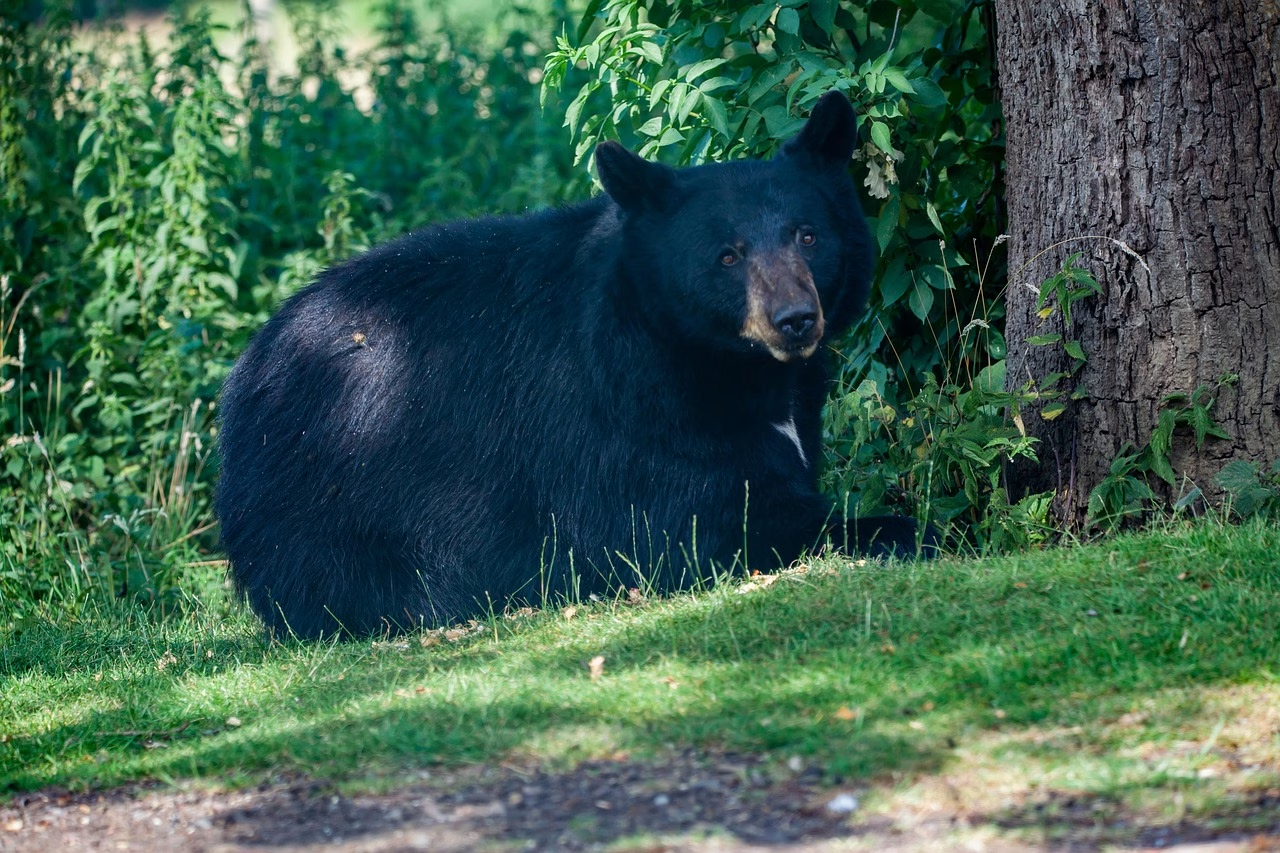A Visitor No One Expected
Before sunrise in Fresno, California, zoo keepers began their quiet routines, checking habitats, preparing food, listening to the early calls of waking animals. Everything felt ordinary until security cameras caught something unusual: a young wild black bear slipping through a wooded stretch and entering the zoo grounds as calmly as if it belonged there.
The bear did not wander aimlessly. It walked with purpose, nose raised, following a scent only the wild could decipher. Keepers watched with stunned silence as he approached a very specific enclosure, the one that houses the zoo’s adult female black bear.
Instinct had guided him, not mischief. The wild had come to visit the captive.
Two Bears, Two Lives, One Moment
The zoo’s female black bear, accustomed to keepers, routine, and the safe rhythm of zoo life, suddenly found herself the focus of a visitor from the world she once knew. The young male remained outside the barriers, keeping a respectful distance while sniffing curiously.
The moment lasted minutes, yet it revealed something deep. A wild bear, raised by mountains, rivers, and pine forests, had followed the faint, ancient pull of scent, a reminder that despite walls and enclosures, animals still communicate in ways we do not always understand.
The fence divided them, yet instinct connected them.
When Instinct Meets Human Spaces
Authorities acted quickly. Zoo teams secured all visitor areas while wildlife officers assessed the situation. The bear was calm. He was not searching for food or reacting to human presence. His attention remained fixed on the enclosure, on the life inside it.
Wildlife officers slowly guided him away, creating sound and safe space until he returned to the surrounding forest. No tranquilizers were needed. No confrontation took place. The encounter ended as quietly as it began.
For the zoo staff, the experience carried both relief and reflection. It showed how close the wild remains, even in cities, and how instinct can pull animals across boundaries built by humans.
The Thin Line Between Wild and Captive
Stories like this strike a familiar chord for Pawlore readers. We often explore how instincts echo through domestic animals, a dog circling before resting, a cat stalking a leaf as if it were prey. But in the wild, instinct has sharper edges. It can move entire bodies across landscapes and push animals through unfamiliar territory.
The young bear followed a biological call shaped by thousands of years of evolution. The scent of a female, the thrill of discovery, the curiosity toward another of his kind, these forces move through wildlife every day, even when humans try to tidy nature into zones and boundaries.
Zoos protect animals, educate visitors, and support conservation. Yet moments like this remind us that the wild is not separate from the zoo. It sits just beyond the fence, breathing the same air, carrying stories we rarely see.
Pawlore Reflection: The Wild Still Speaks
This encounter carries a quiet beauty. A wild bear approached a captive one without aggression, fear, or conflict. They met through instinct, separated by barriers yet linked by a language older than any human structure.
It tells us something important:
Nature still looks for its own, even when humans believe they’ve drawn the borders.
For a few minutes, the woods touched the zoo.
Two lives, one shaped by wilderness, one shaped by human care, recognized each other from across a boundary.
And then the wild turned, stepped back into the trees, and disappeared.
Related articles:
- The Autumn Mistake That Attracts Snakes to Your Garden Without You Knowing
- The Gorillas Still Waiting: Inside the Troop at the Old Bristol Zoo Site
- Penguins That Mate for Life: Myths and Truths About Loyalty in the Cold
- When Dogs Watch TV: How Vision Evolved From the Hunt
- Hamster Cage Size Myths vs Wild Burrows


